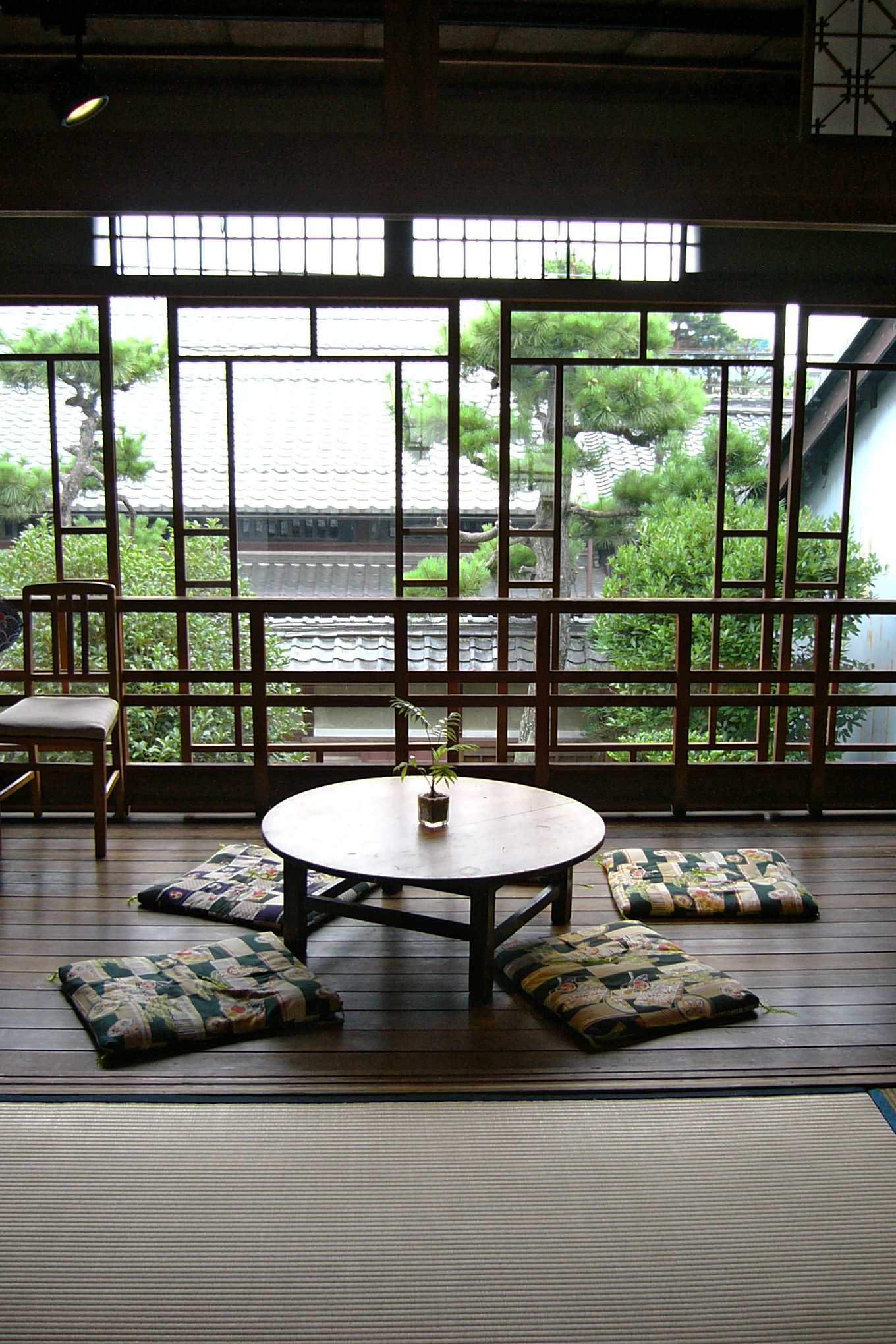Chabudai on:
[Wikipedia]
[Google]
[Amazon]
 A is a short-legged table used in traditional Japanese homes. The original models ranged in height from to . People seated at a chabudai may sit on zabuton or
A is a short-legged table used in traditional Japanese homes. The original models ranged in height from to . People seated at a chabudai may sit on zabuton or
 A is a short-legged table used in traditional Japanese homes. The original models ranged in height from to . People seated at a chabudai may sit on zabuton or
A is a short-legged table used in traditional Japanese homes. The original models ranged in height from to . People seated at a chabudai may sit on zabuton or tatami
are soft mats used as flooring material in traditional Japanese-style rooms. They are made in standard sizes, twice as long as wide, about , depending on the region. In martial arts, tatami are used for training in a dojo and for competition.
...
rather than on chair
A chair is a type of seat, typically designed for one person and consisting of one or more legs, a flat or slightly angled seat and a back-rest. It may be made of wood, metal, or synthetic materials, and may be padded or upholstered in vario ...
s. The four legs are generally collapsible so that the table may be moved and stored easily.
Chabudai are used for various purposes, such as study tables, work benches, or dinner tables (). In the winter, the chabudai is often replaced by a kotatsu
A is a low, wooden table frame covered by a ''futon'', or heavy blanket, upon which a table top sits. Underneath is a heat source, formerly a charcoal brazier but now Electricity, electric, often built into the table itself. ''Kotatsu'' are ...
, another type of short-legged table equipped with a removable top and a heater underneath.
Since early modern Japan, households have used personal tray tables (zen (膳、ぜん)) for dinner, which are small short-legged tables on which dishes for one person are placed per table. This allowed individuals to freely move the tray table and eat wherever they preferred. After the rise of the chabudai around 1920, the custom of commensality emerged in Japan where families have dinner together around a singular table. Large dishes are placed in the middle of the chabudai to be shared, and individuals take a portion of their desired food. Whereas talking while having dinner was considered disrespectful previously, conversations naturally occurred around the chabudai table, so the table manners eased to accepting dinner table talk.
Gaeshi
''Chabudai gaeshi'' is aJapanese
Japanese may refer to:
* Something from or related to Japan, an island country in East Asia
* Japanese language, spoken mainly in Japan
* Japanese people, the ethnic group that identifies with Japan through ancestry or culture
** Japanese diaspor ...
phrase meaning "to flip hechabudai". It describes the act of violently upending a chabudai as an expression of anger, frustration, and disapproval. It may also figuratively describe an analogous outburst and upheaval.
Video game designer Shigeru Miyamoto
is a Japanese video game designer, video game producer, producer and Creative director#Video games, game director at Nintendo, where he has served as one of its representative directors as an executive since 2002. Widely regarded as one o ...
"upends the tea table" whenever a game's development did not meet his standard or needed serious reconsideration. He characterized ''chabudai gaeshi'' as an "action of old-fashioned Japanese fathers" that "would destroy the family" if attempted literally in modern Japanese society.
A Japanese arcade game, '' Cho Chabudai Gaeshi'', is based upon the scenario of ''chabudai gaeshi''.
See also
*Coffee table
A coffee table is a low table designed to be placed in a sitting area for convenient support of beverages, remote controls, magazines, books (especially large, illustrated coffee table books), decorative objects, and other small items.
Most cof ...
* Folding table
* Housing in Japan
*'' Soban'', a similar, small Korean table
References
Tables (furniture) Japanese furniture Portable furniture {{Japan-culture-stub